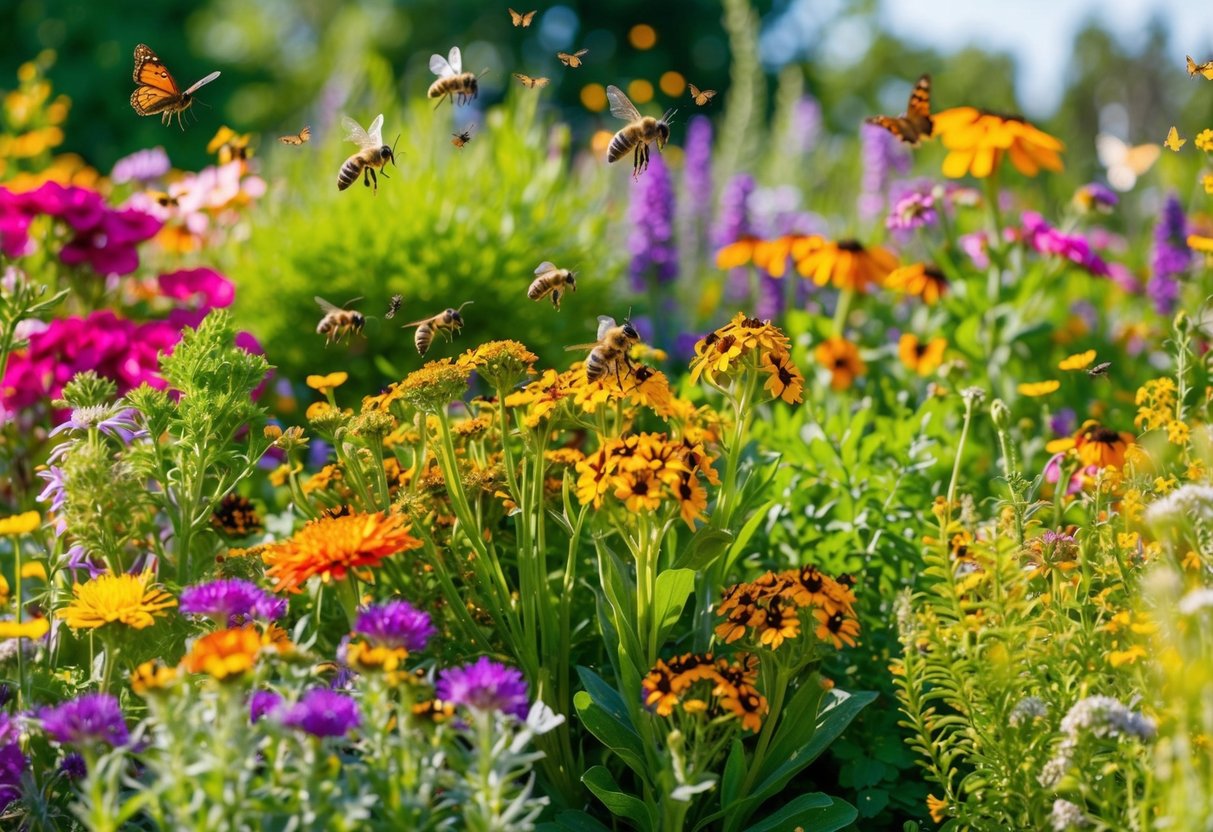
Seasonal Care and Maintenance of a Pollinator Garden
Pollinator gardens require specific seasonal care, including timely planting, pruning, mulching, and weed management. Proper planning ensures healthy, vibrant gardens that support pollinators year-round.
Seasonal Planting and Pruning
During spring, focus on planting native flowering plants to provide a continuous supply of nectar. Choose a variety that blooms at different times to attract diverse pollinators. In summer, deadhead spent flowers to encourage new blooms. Prune overgrown plants to maintain air circulation and healthy growth.
By autumn, assess the garden for any plants that need division. Fall is an ideal time for planting perennials, allowing roots to establish before they become dormant. Winter involves minimal planting, but it’s crucial to trim back dead foliage to prepare for the new growing season.
Mulching and Managing Weed Growth
Mulching plays a significant role in maintaining soil moisture and regulating temperature. Organic mulches, like shredded leaves or bark, enrich the soil as they decompose. Apply a 2-3 inch layer while ensuring it doesn’t cover plant stems to avoid rotting.
Weed growth is more pronounced in spring and summer. Regular weeding prevents competition for nutrients and space, ensuring healthier plant growth. The use of basic gardening tools like hand trowels and hoes assists in efficient weed removal. During fall and winter, a thick layer of mulch minimizes weed emergence, reducing maintenance efforts during colder months.
Supporting Pollinators Beyond the Garden
Efforts to aid pollinators should extend beyond personal gardens to foster larger-scale environmental benefits. Engaging in local conservation initiatives and community-driven educational projects can significantly contribute to preserving these vital species.
Participating in Local Conservation Programs
Participation in local conservation endeavors can help bolster pollinator populations outside individual gardens. Organizations like the Xerces Society often collaborate with local groups to restore natural habitats and encourage biodiversity. Many areas have programs supported by the USDA aimed at promoting pollinator-friendly practices among landowners and farmers.
These programs often involve planting native flowering species and reducing pesticide use. By integrating these practices, communities help create supportive environments for pollinators across wider landscapes. Volunteering with or financially supporting such efforts can amplify their effectiveness, ensuring a future where pollinators continue to thrive.
Educational Outreach and Community Engagement
Education plays a crucial role in fostering a broader commitment to pollinator conservation. Community workshops and school programs can inform individuals about the importance of pollinators and the challenges they face. These outreach efforts may include hands-on activities, such as building bee baths or planting wildflower patches in public spaces.
Education initiatives also provide a platform for sharing success stories and effective strategies. Collaboration between local governments, community groups, and environmental organizations can amplify these efforts, drawing in more participants and resources. By fostering a sense of community responsibility, these programs can build a robust foundation for sustainable pollinator support on a larger scale.
Attracting Specific Pollinators with Targeted Plant Choices
Creating a pollinator-friendly garden involves selecting plants that appeal to certain insects and birds. Strategic plant choices can increase visits from butterflies, moths, bees, and hummingbirds.
Plants to Attract Butterflies and Moths
Butterflies and moths are drawn to bright, fragrant flowers. Lavender is an excellent choice for attracting these creatures. Its aromatic blooms not only draw them in but also provide essential nectar which they need for energy. Marigolds, with their vibrant orange and yellow petals, are another favorite. They flourish in sunny locations which naturally fits the preferences of butterflies.
Goldenrod is a suitable plant for those looking to attract moths. Its late blooming in autumn provides a critical nectar source when other flowers have faded. Additionally, consider planting butterfly weed—it serves as both a food plant for caterpillars and a nectar source for adult butterflies.
Flowers that Lure Bees and Hummingbirds
To attract bees, it’s crucial to choose plants with high nectar content. Bee Balm stands out with its clusters of tubular flowers ideal for bee feeding. Mint, although often disregarded as a simple herb, is incredibly attractive to bees thanks to its fragrant blossoms and easy growth in various conditions.
Hummingbirds have a preference for bright red or orange tubular flowers. Planting Goldenrod can lure these small birds due to its vibrant hue. Meanwhile, Lavender provides an inviting scent that will also attract bees and hummingbirds looking to feed. The charm of these plants lies in their ability to meet the needs of specific pollinators.